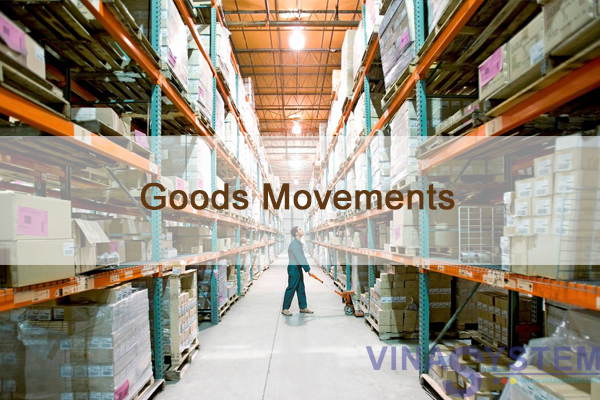
Warehouse Management in SAP Business One - Goods Movements
At the end of this topic, you will be able to:
- Create a goods receipt
- Create a good issue
- Enter an inventory transfer document
1/ Warehouse Management Overview
Your company makes, buys and sells items that are stored in multiple warehouses.
You transfer items between warehouses to improve availability
Sometimes you receive items into stock that do not come through the regular purchasing or production processes
Sometimes stock is issued out of the warehouse as samples for trade fairs or other marketing purposes
Periodically damaged stock is removed from the warehouse
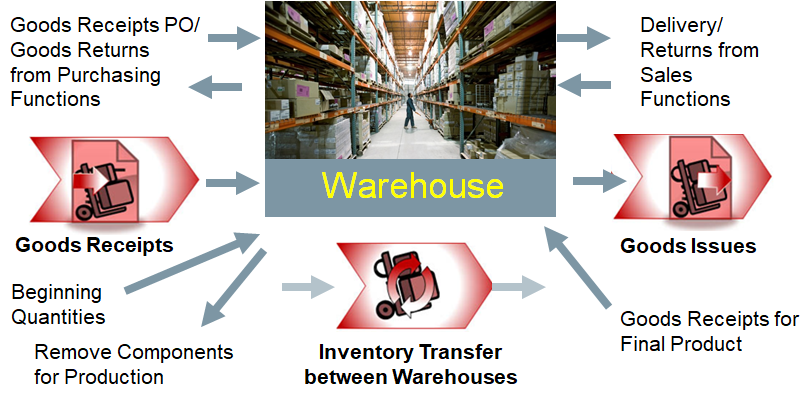
This graphic shows an overview of the different possibilities of stock movements, including some of the stock movements initiated from purchasing, production, and sales documents.
We will focus on the red business process arrows in this topic – these are the basic inventory goods movements.
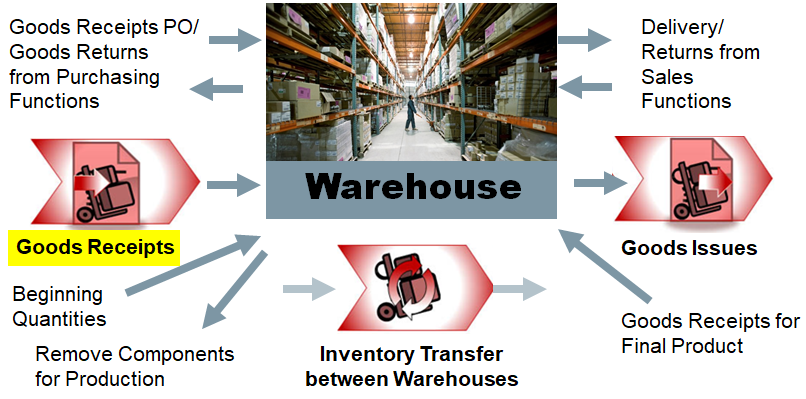
Goods receipt documents are used for receiving inventory that is not purchased or produced. One example might be receiving a sample from a vendor for inspection.
You choose to receive it into the warehouse on a goods receipt rather than on a goods receipt PO because the item is not relevant for pricing or purchasing analysis reports.
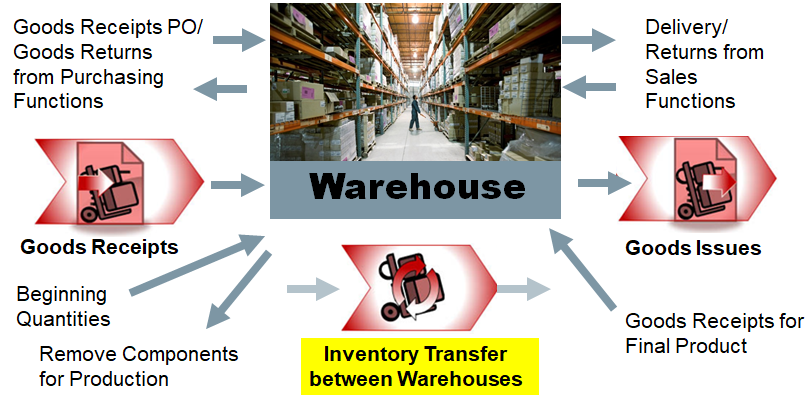
Inventory Transfers are used to move stock between warehouses.
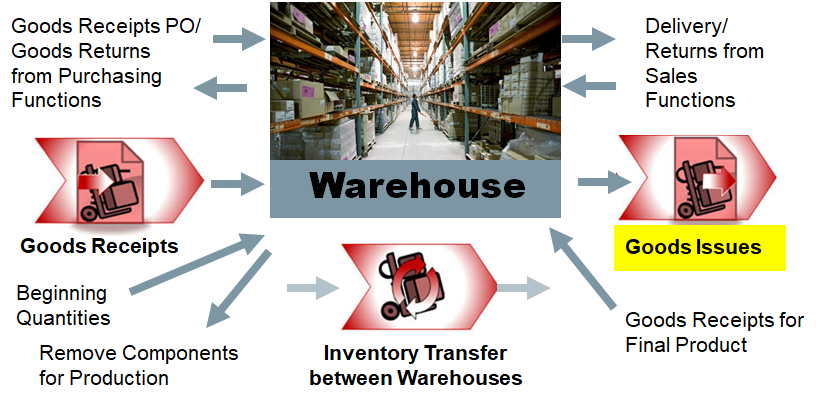
Goods issues can be useful for cases where items are damaged, perhaps by a flood in a warehouse. If water damage renders them useless and unable to sell, they are removed from the warehouse.
2/ Goods Receipts / Goods Issue
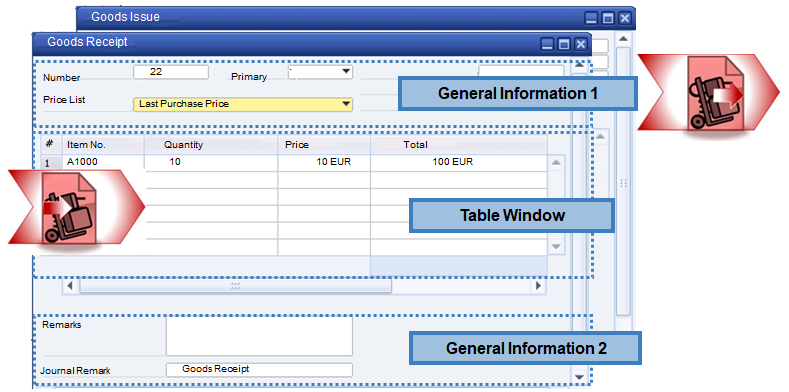
The goods receipt and goods issue windows are very similar.
Both documents require you to enter the warehouse affected.
If you do not specify a warehouse, the system will use the default warehouse from the item master record.
Unlike marketing documents used in the sales and purchasing processes, you cannot enter a business partner.
One difference between the two documents:
- Goods receipts allow you to enter the price of item entering warehouse.
- Goods issues, on the other hand, use the item cost to calculate the value of the accounting transaction and the price field is for informational purposes only.
3/ Inventory Postings
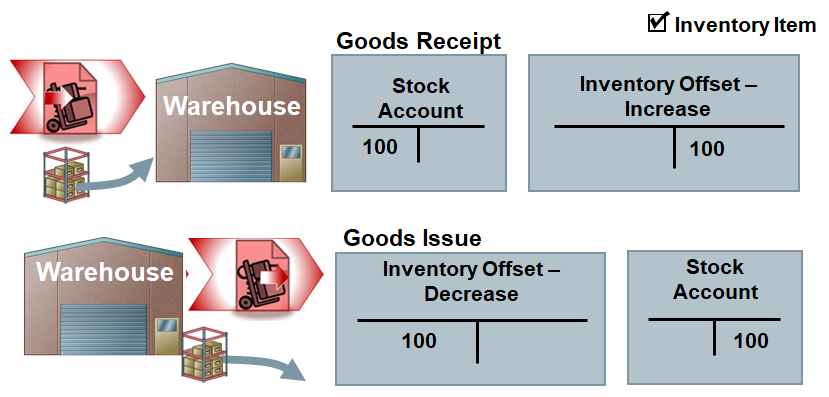
If a company is using perpetual inventory, saving an inventory transaction creates a journal entry automatically.
Here we see a graphic representation of the postings for a goods receipt (on top) and a goods issue (on the bottom).
A goods receipt creates a journal entry that posts the value of the received goods on the debit side of the stock account and the credit side of the inventory offset – increase account.
A goods issue creates a journal entry that posts the value of the issued goods on the debit side of the inventory offset – decrease account and the credit side of the stock account.
4/ Transferring Stock
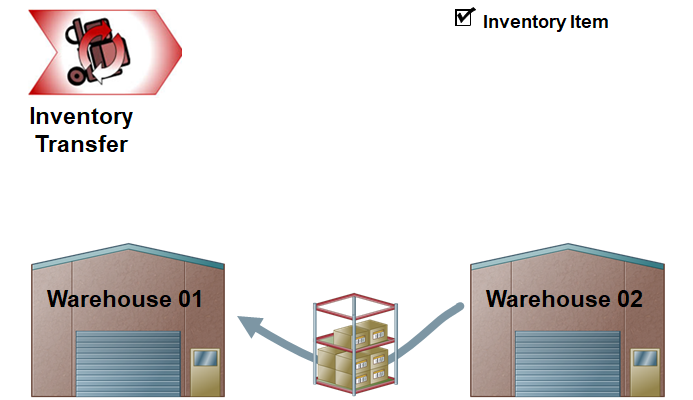
When you have multiple warehouses, you might need to transfer inventory from one warehouse to another.
Here’s an example. A sales order has just come in for 5 pieces of an item.
Warehouse 01 has 4 pieces and the fifth piece is located in warehouse 02.
We can transfer the one piece from warehouse 02 to warehouse 01, so that all the items can be delivered from one warehouse.
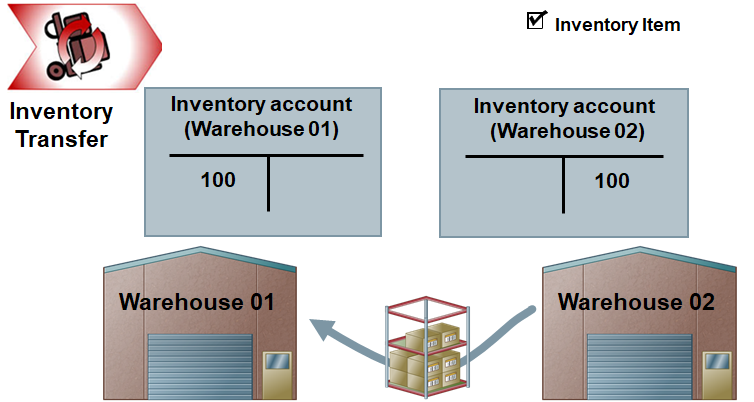
When you add an inventory transfer from warehouse 02 to warehouse 01, the system posts a journal entry. The journal entry posts the value of the transferred goods on the debit side of the stock account of warehouse 01 and on the credit side of the inventory account of warehouse 02.
5/ Customer Consignment
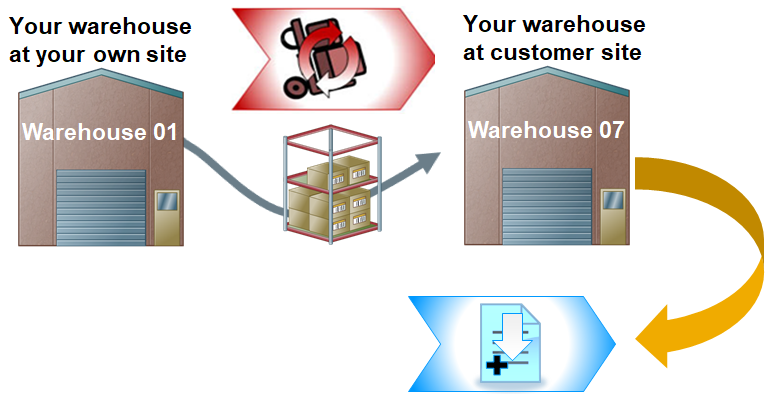
Inventory transfer documents can also be used to transfer items to a consignment warehouse at a customer’s site. Unlike the goods receipt or goods issue documents, inventory transfers have fields for a business partner, a contact person and ship-to address.
When items are withdrawn from the consignment warehouse at the customer site, you create an A/R invoice for the items and quantities used. Each row references the consignment warehouse so that inventory is shown as removed from the warehouse when the invoice is saved.
6/ Inventory Transfer Request
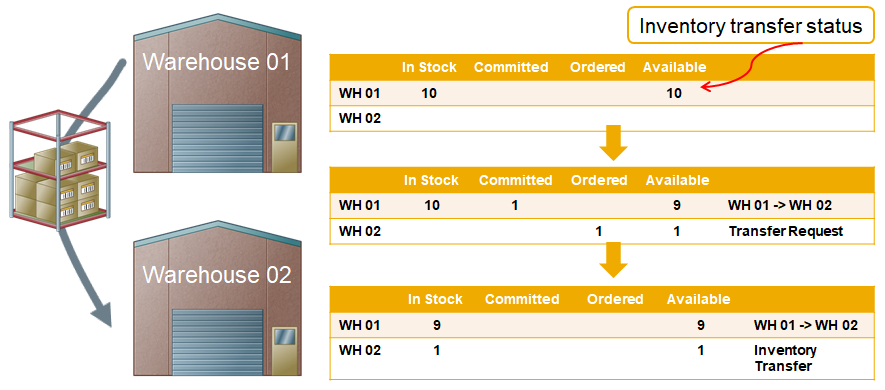
Inventory transfer requests commit items to move from one warehouse to another with no effect on inventory movements or financials. Only once the request is closed is the stock transferred and the financial posting made.
When the inventory transfer request has the status Open:
For the issuing warehouse, the requested quantity is regarded as Committed.
For the receiving warehouse, the requested quantity is regarded as Ordered.
When the inventory transfer request has the status Closed:
For the issuing warehouse, the requested quantity is released from the Committed quantity. If you copy this request fully into an inventory transfer, the quantity is subtracted from the In Stock quantity.
For the receiving warehouse, the requested quantity is released from the Ordered quantity. If you copy this request fully into an inventory transfer, the quantity is added to the In Stock quantity.
7/ Bin Locations in Goods Movements
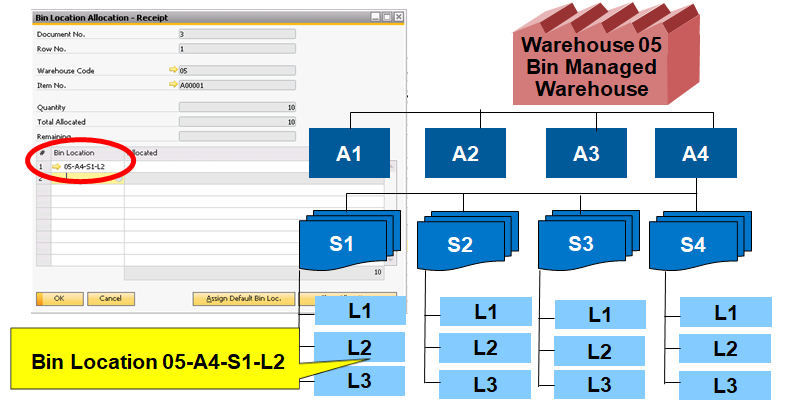
If a warehouse is managed by bin locations, then a bin location will be required on inventory documents for any items stored in that warehouse.
Bin locations represent a physical shelf or bin where items are located. Bin location codes consist of the warehouse code plus the code for each sublevel.
You can define default bin locations for goods receipt and rules for automatically determining bin locations for goods issues.
To manually specify a bin location, right-click on the quantity field in a row to open the Bin Location Allocation window.
In this window you can specify quantities and bin location codes for the item on that row.
8/ Summary
Here are some key points:
- Goods movements are recorded by marketing documents and inventory transactions.
- The three main inventory transactions are: goods receipt, goods issue, and inventory transfer.
- A warehouse is required on all inventory documents.
- You cannot enter a business partner on goods receipt or goods issue.
- An inventory transfer request can be used to commit the movement of stock from one warehouse to another.
- If you activate bin locations for a warehouse, then a bin location is required every time you use that warehouse on inventory documents.
- When using perpetual inventory, each goods movement creates a journal entry.






